New Scientist
Crime-scene DNA extracted from single hair
You wouldn't expect forensic teams to waste valuable evidence. But it happens all the time, though perhaps not for much ...
Genes linked to left-handedness identified
Are you a south paw? Gibble-fisted? A cuddy-wifter? A new study into what makes people left-handed shows that some of ...

The right to genetic ignorance
The intention behind routine genome sequencing is good, but could it obliterate the right to remain ignorant of potentially untreatable ...
Your genomic future: Personalised medicine is here
FOR the Yuska family, the future of medicine is here. Thanks to genome sequencing, parents Danielle and Erik have a ...
New theory on the origins of life on Earth
Martian minerals dissolved in groundwater are much more likely to yield a key building block for life – phosphate – ...

Martians on Earth: Compounds from Mars may have seeded life on our planet
New findings suggest that Mars holds the key ingredients needed for the evolution of life itself, suggesting that life may ...
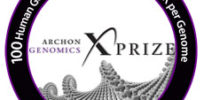
Genomics X Prize canceled: “Outpaced by innovation”
Improvements in genome sequencing speed and cost led organizers to cancel the Genomics X Prize. But will the goal of ...
Genetic switch to guard against escaped ‘superviruses’
Flu scientists disagree over experiments to make the H7N9 bird influenza virus even more dangerous. Some argue that "gain of function" experiments ...
Whose stem cells are they anyway?
How should we regulate treatments that use cells taken from a patient's own body? If the cells are grown in ...
DNA strands trying to reconnect, caught on film
Time-lapse microscopy has captured severed DNA strands in the act of pairing up with partners from the wrong chromosomes – ...
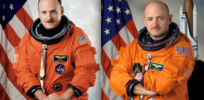
Astronaut twin study could reveal genetics of space health
NASA's Identical twin astronauts are splitting up to help scientists understand genetics of space health problems ...
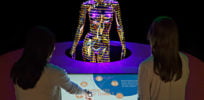
Smithsonian’s genetics exhibit inspires mixed review
Smithsonian's new exhibit explains how the human genome relates to health, medicine and ethics, but not really how it works ...
Super-organs: building body parts better than nature
Fancy a liver that works a little harder? Synthetic DNA circuits inserted into human stem cells could soon allow us ...
Inside the industry that supplies millions of mutant mice
It's often said that in a city, you're never far from a rat. Today's UK government figures for the numbers of ...
Obesity gene makes you fat by keeping you hungry
If you can't resist that extra portion of dessert, maybe it is time to stop bemoaning your lack of willpower ...

Should we control sex to protect humanity’s future?
The more we know about the nature of reproduction, the more we can control it -- and our own future ...
Ethnic background influences immune response to TB
Your ethnic background could influence the way in which your body fights tuberculosis. Over the thousands of years that humans ...
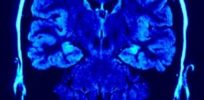
Scientists watch DNA development in a growing brain
Researchers have used chemical tracking and genome sequencing to create a time-lapse map of human brains as they develop ...
Forensic partial DNA profiles provide important but controversial information
The following is an excerpt. Forensic scientists can now construct a partial DNA profile from just a few cells, says David ...
Gene testing to screen astronauts for DNA damage risk
The following is an edited excerpt. Humans in space are at risk of a variety of ailments, from brittle bones ...
How to win people’s hearts and minds for GE farming
The following is an edited excerpt. In a carefully crafted speech, UK environment minister Owen Paterson announced that the government ...

The most detailed map of the human brain ever
A new 3D brain map called BigBrain is the most detailed ever constructed, with a resolution so high it can ...
Careless farming could cost us benefits of GM crops
The following is an edited excerpt. Resistance is far from futile. Agricultural pests are evolving immunity to the toxins in ...
Researches create vast network of genes linked to autism
The following is an excerpt. Here's a game of join the dots. Hundreds of genes have been linked to autism, ...

Artwork highlights legal debate over ‘abandoned’ DNA
A provocative art project creates "facial reconstruction" sculptures based on DNA found on trash. Is it legal? ...
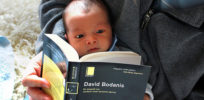
Scientists identify mutations associated with intelligence for first time
In the first study of its kind that has generated a reproducible result, researchers report on ten variations in DNA ...
Stem-cell treatment restores sight to blind man
The following is an excerpt. An experimental stem-cell treatment has restored the sight of a man blinded by the degeneration ...
Human stem cells made using Dolly cloning technique
The following is an excerpt of a longer story. Sixteen years after the amazing creation of Dolly the cloned sheep, researchers ...

